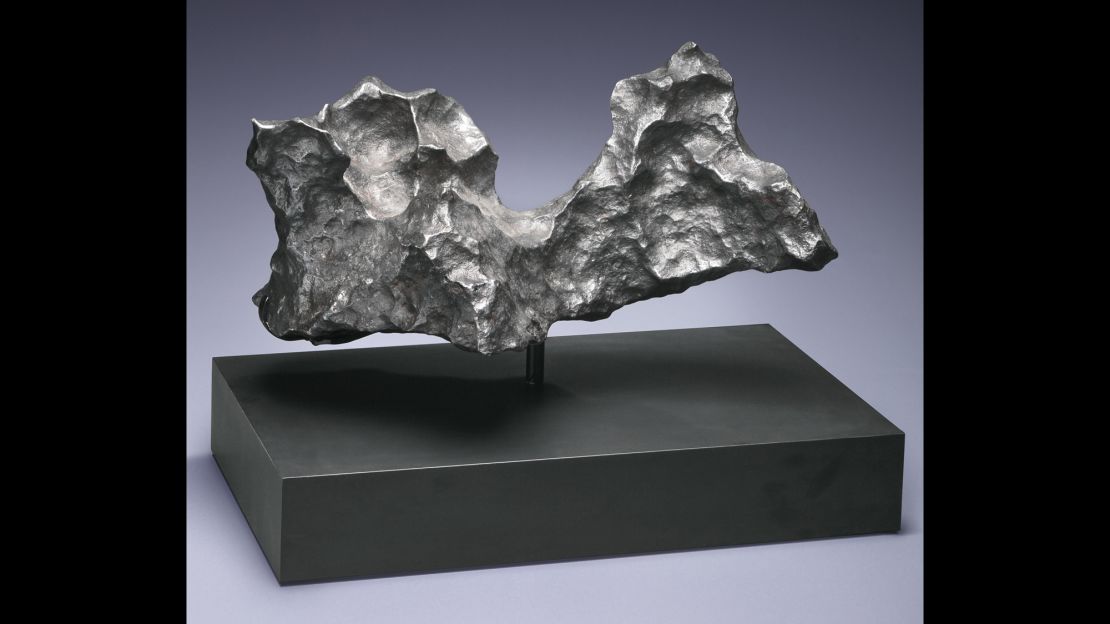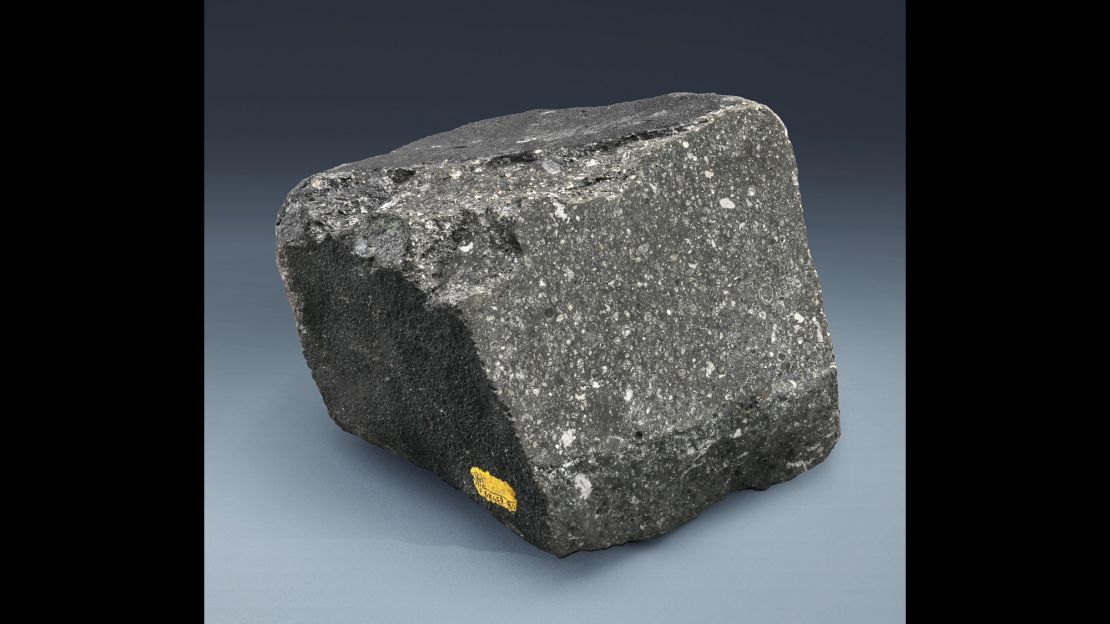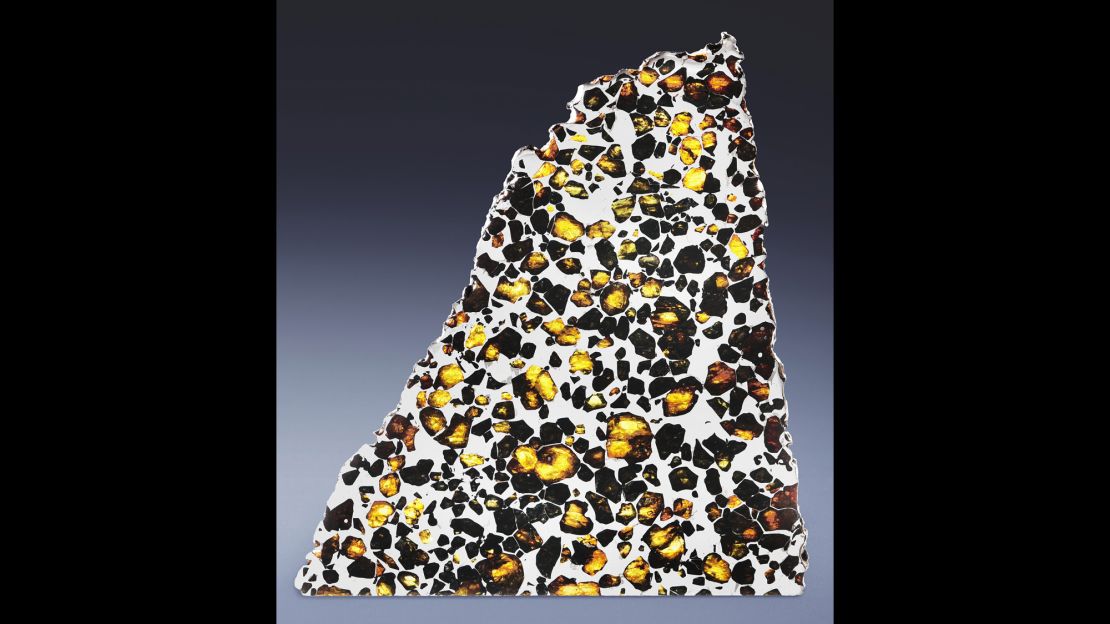It’s a strange feeling, holding a piece of Mars in your hand. But that’s what I’m doing at the offices of Christie’s auction house in New York.
Laid out in front of me are a series of rare meteorites, part of “Deep Impact: Martian, Lunar and Other Rare Meteorites,” Christie’s annual online auction of extraterrestrial specimens. Deep Impact, which will be live from May 3 to 10, with lot estimates ranging from $1,000 to $120,000.
Here, some are large, some small; some from the moon, a couple from Mars. One is the shape of a pear and fits in the palm of my hand. Another, the size of a small window, is presented sliced, exposing sparkling crystals of peridot and olivine.
“Every time someone, for the first time, holds an abstracted work of art from outer space made of iron, that is a third as old as time itself, it’s a captivating moment,” says James Hyslop, the Christie’s specialist who organized the sale. “Still, for me, it’s a moving experience.”
The ultimate rarity
Meteorites are what’s left when a comet, asteroid or a meteoroid survives its passage through the earth’s atmosphere. Their immense appeal to collectors is threefold, Hyslop says.
“Number one, they are incredibly rare. Number two, they are hugely beautiful. And number three, there is that wonderful philosophical conundrum about them. They don’t come from this world. They are extraterrestrial and other worldly works of art,” he says.
But that doesn’t mean that all meteorites are worthy of a hefty price tag. Many are worn down as they enter our atmosphere, eroded by terrestrial processes. Good ones are hard to find, and typically sourced from existing private collections.

To be included in a Christie’s auction, a meteorite needs to have what Hyslop dubs “the four S’s”: size, shape, science and story.
Generally, the bigger the meteorite, the higher the price, he explains. But it’s the shape of a specimen that he deems the most crucial factor when it comes to value.
“Some meteorites are just beautiful objects in their own right,” Hyslop says.
“I’ve seen them compared to abstract sculptures by the likes of Henry Moore and Barbara Hepworth,” he adds, noting that many collectors of modern art are drawn to meteorites for this reason.

From a scientific standpoint, along with rarity, which accounts for the higher price of lunar and martian specimens, it’s the immense age of meteorites that appeals to collectors. One lot, a large specimen found in Mexico, is a carbonaceous chondrite meteorite, comprising, Hyslop explains, “literally the oldest material that man’s hand can hold and touch.”
“It’s 4.56 billion years old, a number so astonishingly large that it almost loses all meaning. The way I’ve started to think about it is that the object is a third as old as time itself, which is really quite profound,” he says.
Read: Why ivory antiques are so controversial
Yet, despite the traditional factors that determine a specimen’s desirability and value, there’s something uniquely personal about this type of collecting, Hyslop notes. When it comes to meteorites, preference can often feel like a mystery.
“If you got 10 people together in a room and asked to pick their two or three favorites, I can guarantee no one would have the same answer,” he says.

Hyslop is partial to lot 31, a large and “magical” partial slice of pallasite.
“Pallasite meteorites have this wonderful mix of iron and stone in them, and there are crystals in this iron matrix that (have) been polished to a mirror finish; and it’s sliced, so the gems are translucent,” he says. “When you hold it up to the light, it sparkles.”
Lot 31, like all of the listings in “Deep Impact,” comes complete with the exact set of coordinates where it was found, which is why I find myself, later in the day hovering above a forest in Argentina on Google Maps.
A red arrow marks the place where it fell to earth and waited to be found.










